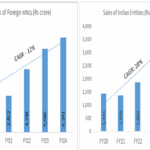- “Neurologists warn that taking over the counter medication to treat recurrent headaches may actually cause more headaches, leading to a condition known as ‘Medication Overuse Headache’ (MOH)
- Almost 30% of chronic headache are now Analgesic overuse headache.”
New Delhi, December 17, 2018:
While a bad headache is enough to derail the entire day’s schedule, a painkiller or two can quickly restore the momentum. At some point in time, almost all of us have a headache that goes away with a painkiller. However, doctors have a word of caution for such quick fixes. According to them, having painkillers more than two or three times a week or more than ten days in a month for a headache can set off a cycle called ‘medication-overuse headaches’ (MOH), where patients develop a headache due to the medication itself.
Just like Mrs Suman, who was experiencing recurrent headaches from last 15 years, had no clue that her few-time-a-year headache could pave the way to something as serious as MOH.
Initially, she would get headaches on fasting, late nights’ loud noises, hot weather, around functions and parties, but maximum few times a year. During the attack, she would experience a throbbing pain on one side of the head and would get irritable at sound and light. However, mostly taking a over the counter analgesic and lying down would fix her problem. But gradually the frequency of pain increased to 3 to 4 times a month and reached up to 10 headaches a month after a family tragedy.
It’s not just the frequency of her headaches were increasing, but the effects of Analgesic was also reducing. Eventually, Mrs Suman reached to point where she was taking 15-20 tablets of analgesic a month along with other sedatives.
Explaining the disorder Dr Praveen Gupta, Director Neurology, Fortis Memorial Research Institute, says, “Characterized by a chronic headache and overuse of different headache medications, MOH is a fairly common disorder. This is probably because a headache is not a feared condition and patients do not hesitate in taking acute pain relief. Although this is fine sometimes, when it starts coming into a routine it can kick off a cycle of pain, where the pain is actually triggered by the medication itself.”
Dr. Vinay Goyal, Professor, Department of Nuerology, AIIMS says “Analgesic overuse headache is commonest cause of chronic migraine. Availability of drugs over the counter is another reason for high number of cases seen in hospital. These patients needs treatment under strict supervision of physician. Almost 30% of chronic headache are now Analgesic overuse headache”.
Dr Gupta told that like Mrs Suman, people often keep bearing the pain, thinking it’s just a headache, which aggravates the problem. “When Mrs Gupta consulted me, she was having an almost continuous dull headache since last 3 months, which often worsens when accompanied with nausea and vomiting. She had a migraine since long and due to medication overuse, she had developed a medication overuse headache,” told Dr Gupta.
How to identify if a headache is actually a MOH, can’t it be mistaken with a migraine or any other type of headache?
“Unlike a migraine, which is characterized by periodic attacks of multiple symptoms like nausea, light and sound sensitivity, MOH is a dull and constant headache which is generally worse in the morning and after exercise. However, it is also important to understand that people with primary headache disorders like a migraine, cluster, or tension-type headaches using less effective or nonspecific medications are the ones who are prone to develop MOH,” tells Dr Gupta.
Pain upon awakening is the classic symptom of MOH. While painkillers reduce the pain briefly, it returns as the medication wears off. Other symptoms that may accompany the headaches are nausea, anxiety, irritability, asthenia, restlessness, difficulty concentrating, memory problems and depression2.
So when painkillers themselves are giving headache how is MOH treated?
“As far as the choice of treatment is concerned, withdrawal of the overused medication is recognized as most effective. Additionally, preventive treatment is started after diagnosing the reason of a primary headache, either during or immediately following withdrawal,” says Dr Gupta.
Explaining further about the treatment process Dr Gupta says, “However, just like any other drug withdrawal therapy, during the start of MOH treatment, headaches will get worse. Sometimes it may also accompany nausea, vomiting, insomnia, restlessness or constipation. Therefore, it is important to counsel the patients and family before starting the treatments and convince them that eventually, headaches will get better.”
Depending on the severity of MOH, doctors sometimes suggest tapering the dose of suspected painkiller before ultimately discontinuing completely. Along with therapy and medication, doctors also recommend bringing positive changes in lifestyle, like increasing outdoor time, improving dietary habits and reducing stress.
“Prevention of MOH is far easy than its treatment. All we need to do is to report a recurrent headache or a dull headache that continues throughout the day, immediately to a doctor and address the underlying reasons effectively and avoid self-medication,” adds Dr Gupta.







